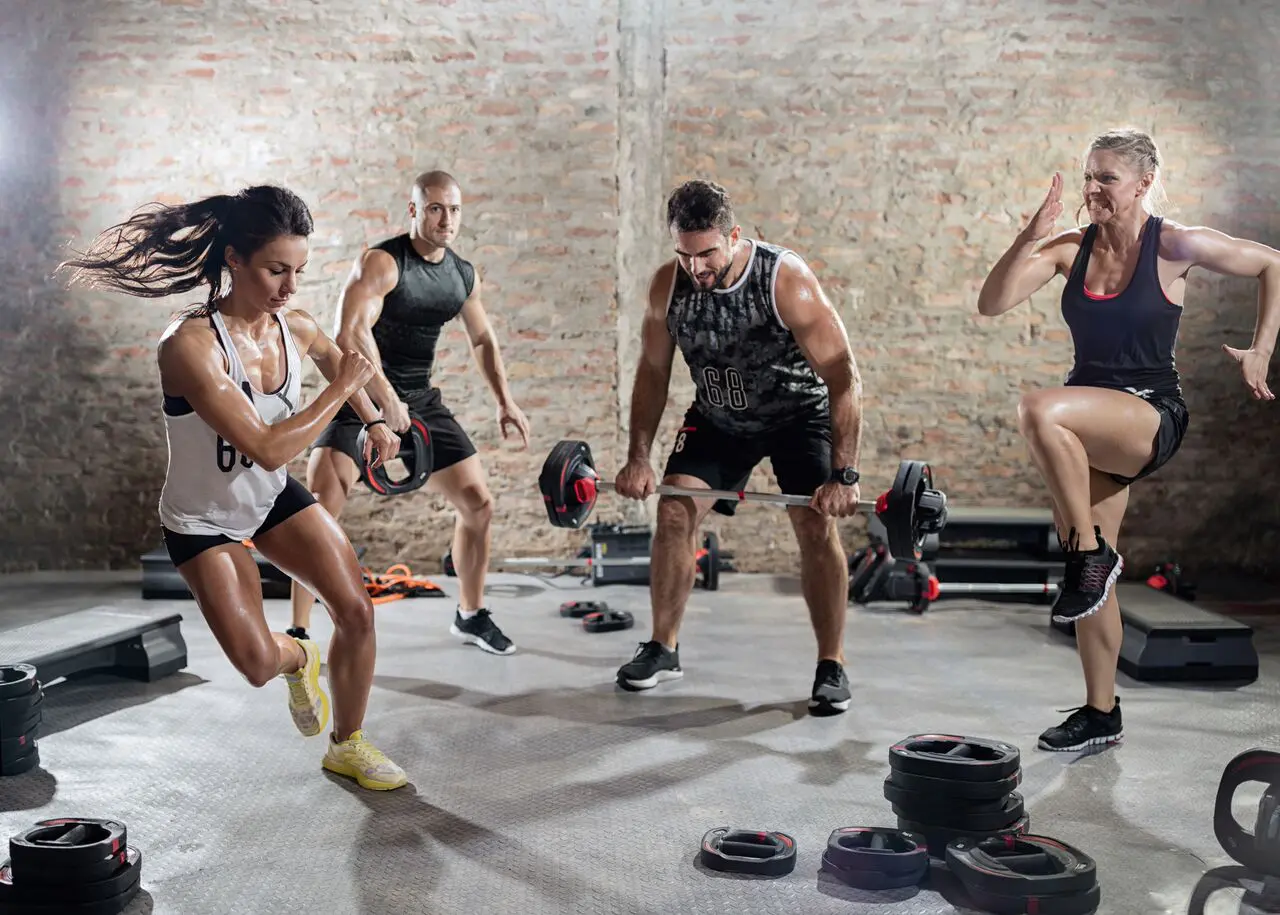
Exercise and Diabetes – The Dose Makes The Medicine
Exercise is a form of medicine that we can freely and happily administer to ourselves…
BUT the effects are dependent on the dose, frequency, modality, and intensity.
THE BENEFITS OF EXERCISE FOR DIABETES MANAGEMENT
- Promotes non-insulin mediated glucose uptake via GLUT4 Translocation
GLUT4 translocation = opening of the glucose gateway to the cell
aka contraction-mediated glucose uptake
aka exercise-induced glucose uptake - Increases muscle mass
Think of muscle as a sponge to soak up excess sugar in the bloodstream.
The bigger the sponge – the bigger the sugar-storing capacity. - Increases Glycogen Storage Capacity
Glycogen stores within the muscle are like the air pockets within the sponge. A dry sponge can soak up much more fluid than a wet sponge.
Exercise acts as a way to squeeze out the wet sponge in order to make space to soak up new glucose from the blood. - Improves Insulin Sensitivity
A case for consistency: IS higher in the trained state than in the untrained state. - Improves Nutrient Partitioning
Exercise primes the body to preferentially store carbohydrates as glycogen (the stored form of glucose in the muscles and liver).
EXERCISE TOOLKIT
- Walking
- HIIT
- Circuit Training
- Aerobic/MICT
- Resistance/Strength Training
- Yoga/Pilates
- Exercise Snacks
- Playing Sport
WALKING
Walking after meals improves glycemic control in both healthy individuals and people living with T1DM.
Walking before meals does not have the same effect.
15-30 mins of walking has been shown to be an effective dose.
Try to walk 2-3 times a day and accumulate as many incidental steps as possible
Walking can improve Hba1c and Time in Range (TIR)
A study comparing 3 groups:
Sitting group – 14 hrs of sitting per day
Exercise group – 13 hrs sitting with 1 hr vigorous ex
Low intensity physically active group – 4 hrs walking 2 hrs standing
One hour of daily physical exercise cannot compensate for the negative effects of inactivity on insulin levels and plasma lipids if the rest of the day is spent sitting.
Reducing inactivity by increasing the time spent walking/standing is more effective than one hour of physical exercise when energy expenditure is kept constant.
Ideally, do both! Some structured exercise per day combined with time on feet standing and walking
HIIT
HIIT has consistently been shown to increase BGLs during and after exercise
HIIT is Glycolytic i.e requires carbohydrate oxidation
Stimulates catecholamines, adrenaline, norepinephrine, cortisol, and growth hormone which can increase plasma glucose and lactateHIIT turns on the glucose tap (the liver) at >80% VO2max
Hepatic (liver) glucose production during intense exercise exceeds the related transient increase in glucose disposal by skeletal muscle, thereby promoting hyperglycemia in both healthy subjects and subjects with diabetes
Glucose output rises 7-8 fold + Glucose uptake rises 3-4 fold = Net increase in glycemia
Fasted HIIT in the morning with no IOB can lead to greater hyperglycemia
No strong evidence to support improved HbA1c, however, if HIIT leads to weight loss in overweight individuals it may improve insulin sensitivity which can improve Hba1c
Glucose elevation can be attenuated with IOB
May be the preferred mode of cardio for people who have frequent ex-induced hypo from MICT
Can be a time-efficient way to improve CV fitness and VO2max
Role for short sprint (10s) before and/or after MICT to mitigate hypoglycemia
Conversely, there may be a role for aerobic MICT warm-up and cool-down to mitigate ex-induced hyperglycemia from HIIT/SIT
It May help with lean mass and insulin sensitivity
INSULIN CORRECTION PROTOCOL FOR POST-HIIT HYPERGLYCEMIA
Correction bolus administered 15 mins post-workout if BGL >8mmol
Correction factor calculated using “rule of 100” (ICF = 100/TDD)
Dose = (current BGL – target BGL) divided by ICF
There was a dose-response relationship between %ICF (0, 50, 100, 150%) and TIR
Subjects who administered 150% of calculated ICF had the greatest results i.e better TIR, and less time in hyperglycemia, while maintaining a low risk of hypos.
AEROBIC/CARDIO
Moderate intensity continuous training (MICT), unlike HIIT, generally results in a lowering of BGLs during the exercise bout
Regular Aerobic training improves HbA1c in people living with T1DM
During aerobic exercise glucose uptake in the muscle exceeds liver glucose output hence the net effect is a lowering of BGLs
MICT is great for improving mitochondrial health and function
MICT, unlike HIIT, is not glycolytic and required a larger degree of fat oxidation
Aim to perform 150 mins of aerobic exercise per week (bike, run, row, swim, etc)
To perform MICT safely, ensure a reduction of IOB.
RESISTANCE/STRENGTH TRAINING
Resistance exercise (RE) is a potent stimulus to improve insulin sensitivity for up to ~72 hours after the exercise is completed.
RE can result in reduced insulin requirements for hours/days after.
RE does not reduce BGLs to the same extent as MICT
RE performed first thing in the morning in a fasted state with no IOB can lead to hyperglycemia.
RE performed in the evening in a fed state with IOB can lead to more stable BGLs (or even a slight lowering)
Hyperglycemia during and after a.m RE may be avoided by performing RE later in the day or by performing a/m RE with some IOB
Hypoglycemia during p.m resistance exercise may be attenuated by performing morning RE
The magnitude of counterregulatory hormones (especially catecholamine) in response to RE may vary greatly by age and level of fitness
Young fit individuals are likely to have the most pronounced response and hence may be better off performing p.m RE
CIRCUIT TRAINING
A powerful 3-punch combo:
1. Global GLUT4 translocation across all muscles
2. Global glycogen depletion
3. Global insulin sensitivity and improved glucose tolerance
Note, the mechanisms listed above are site-specific.
The contracting muscle is the site of mechanistic action.
For example, bicep curls deplete bicep glycogen and open bicep gateways.
Hence why full body circuit training made up of compound exercises, incorporating all of the major muscle groups, will offer the best bang for your buck.








No comment yet, add your voice below!